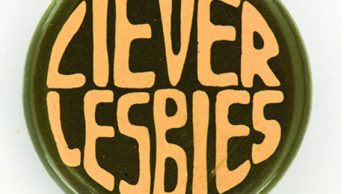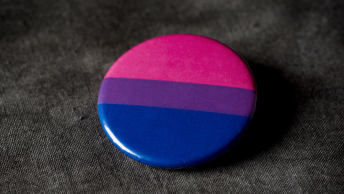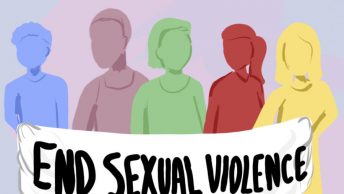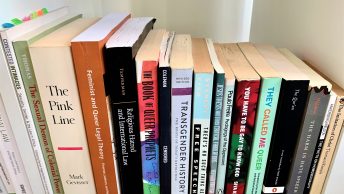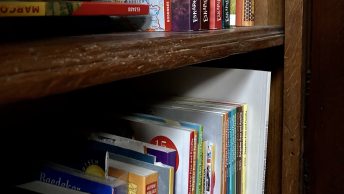In the blogpost series “Banning LGBTQ+ Content in the Russian Media”, the censorship of LGBTQ-related media content in Russia and its implications are studied. The blogposts are based on this thesis (in Dutch), in which more extensive research on this topic can be found.
In this second blogpost, a mesolevel approach is taken to explore the consequences of the anti-gay propaganda law for the media portrayal of the LGBTQ+ community.
In today’s digitalised world, media narratives play an increasingly dominant role in the construction of societal views and values on any given topic. In the context of the anti-gay propaganda law, the Russian government manipulates the media narratives surrounding the LGBTQ+ community to portray it as a threat to society, and, consequently, to gain both national and international support for the Russian anti-LGBTQ+ ideological values. The government achieves this by controlling the media in three different ways: censoring media content, framing existing media narratives, and distributing their own content to create new narratives.
Censoring Media Content
Since Vladimir Putin’s inauguration in 2000, the Russian government has restricted the representation of the LGBTQ+ community in the public sphere through their control of all mainstream media. One way they regulate LGBTQ+ related content is by excluding it from the media entirely, for example by prohibiting the broadcasting of certain news items or removing scenes from LGBTQ+ related films (Panyan, 2014).
Seeing as narratives are created as much by the stories that are not told as by the text and images that they do include, the government’s censorship of non-heterosexuality in the media impacts the narratives surrounding the LGBTQ+ community considerably. By delimiting the extent of what is perceived as ‘right’ in terms of gender and sexuality, the Russian government implicitly puts across the message that heterosexuality is the norm, and that anything outside this norm is not accepted (Edenborg, 2015).
Framing Existing Narratives
The government’s control of the digital media can only go so far, however. Even in the censored media environment, LGBTQ+ related content persists to prevail in Russia, whether illegally or on the margins of the anti-gay propaganda law (Fedorova, 2020). Especially international social media platforms sustain LGBTQ+ related content, and once images exist in the digital sphere, the regime cannot simply pretend such content is not there (Buyantueva, 2018).
Where the government cannot control which content viewers receive, it manipulates how they receive it by imposing on the viewers an interpretative framework that fits the government’s anti-LGBTQ+ ideological values (Panyan, 2014). In 2013, for example, when fragments of a Dutch interview with Putin about the anti-gay policies were broadcast on Russian television, they were directly followed by a video about how the sexual tolerance in the Netherlands leads to an increase in the acceptance of paedophilia. By associating non-heterosexuality with paedophilia, the Russian government makes it so that criticising the anti-gay measures may seem like justifying child abuse (Edenborg, 2015).
Creating New Narratives
In addition to censoring and framing existing content to regulate the narratives surrounding the LGBTQ+ community in Russia, the government creates new narratives by distributing its own media content. Between 2014 and 2017, the Russian Internet Research Agency (IRA) distributed thousands of LGBTQ+ related Facebook posts worldwide on different LGBTQ+ accounts.
The posts mainly emphasised the division and conflicts surrounding the LGBTQ+ community and were aimed at provoking the debate on LGBTQ+ rights by increasing the visibility of the LGBTQ+ community in the international media, in an attempt to make the heterosexual majority feel threatened by a minority supposedly imposing their sex-radical norms on them. By sowing online discord about divisive issues such as LGBTQ+ rights, the government aimed to increase international support for the Russian anti-LGBTQ+ ideological values (Jones, 2019).
Effects on the LGBTQ+ Community
The manipulation of the media narratives surrounding the LGBTQ+ community in Russia severely affects both this group’s position in society and the individual wellbeing of its members (Peele, 2007).
In the third blogpost of this series, a microlevel approach is taken to explore how the restricted representation of the LGBTQ+ community affects the attitudes towards this group, and what consequences this has for their member’s health.
Jasmijn ter Haar, Bachelor student Liberal Arts and Sciences at the University of Utrecht
References
Buyantueva, R. (2018). LGBT Rights Activism and Homophobia in Russia. Journal of Homosexuality, 65(4), 456–483.
Edenborg, E. (2015). Banning “Homosexual Propaganda”: Belonging and Visibility in Contemporary Russian Media. Sexuality & Culture, 19(2), 256–274.
Fedorova, A. (2020). 5 Instagram Accounts Flying the Flag for Queer Russian Love. The Calvert Journal.
Jones, T. (2019). Double-use of LGBT youth in propaganda. Journal of LGBT Youth 17(4): 408-431.
Panyan, K. (2014). LGBT Rights and the Role of Mass Media in the Russian Federation and the United States.
Peele, T. (2011). Introduction: Popular Culture, Queer Culture. In: Queer Popular Culture: Literature, Media, Film and Television (pp. 1-8). New York: Palgrave Macmillan, 2011.
Photo
Pixabay


